 He was bound to get burned. 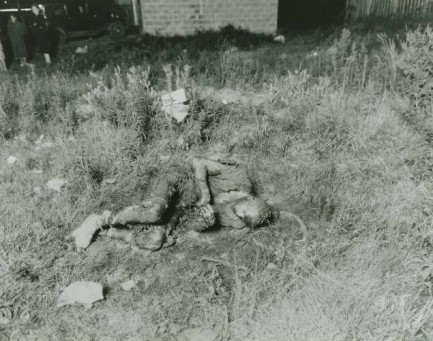 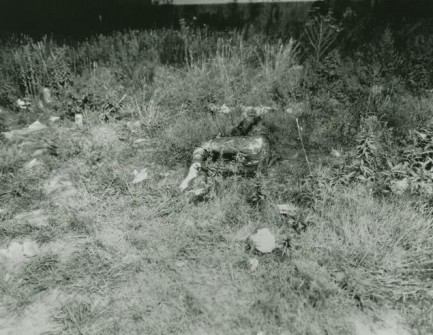
Just in case you haven't had any gruesomeness in your week, above you see mobster Irving Feinstein after he was burned by Murder, Inc. today in 1939. What do you have to do to meet this fate? Feinstein tried to horn in on territory that wasn't his, but that wasn't why he was torched. His error was in trying to stay alive. Feinstein was in the process of being repeatedly ice picked by hitman Harry Strauss, and bit Strauss's finger. Strauss and associates called a halt to the ice picking and instead bound Feinstein, his legs stretched backward and a rope running from ankles to neck. This killed him by the more protracted method of slow strangulation. Then afterwards, just for the hell of it, the killers transported the body to a vacant lot in Brooklyn and did what you see above. There's a lesson in this: don't bite the hand that bleeds you.
 She has all the qualities you look for. 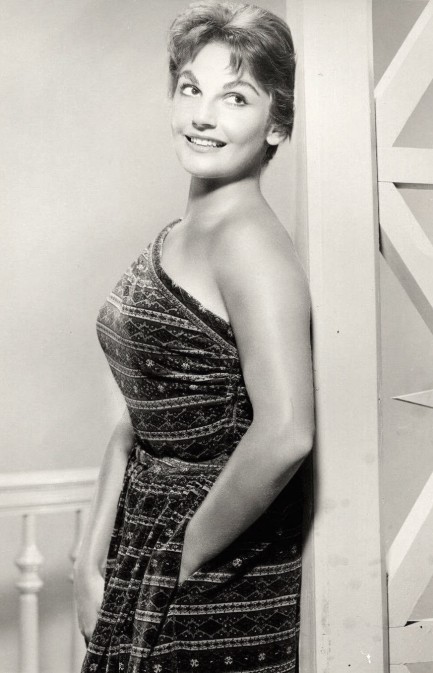
U.S. actress Lita Milan, born in Brooklyn as Iris Maria Lia Menshell, had a short Hollywood career She started in 1954, and her last motion picture—I, Mobster—came in 1959. But she remained in the public eye. In 1960 she married Ramfis Trujillo, who happened to be the son of Rafael Trujillo, longtime dictator of the Dominican Republic. We assume she fell for the ole, “I don't want to be like my father,” routine, but when pops was assassinated in 1961, Ramfis sought out and killed some of the plotters himself. He became leader of the country, and Milan, presumably, became first lady of sorts. It didn't last long—less than a year later they left the D.R. for exile. The above photo predates all those adventures, circa 1957.
 Welcome to Wilson's house of pain and leather. 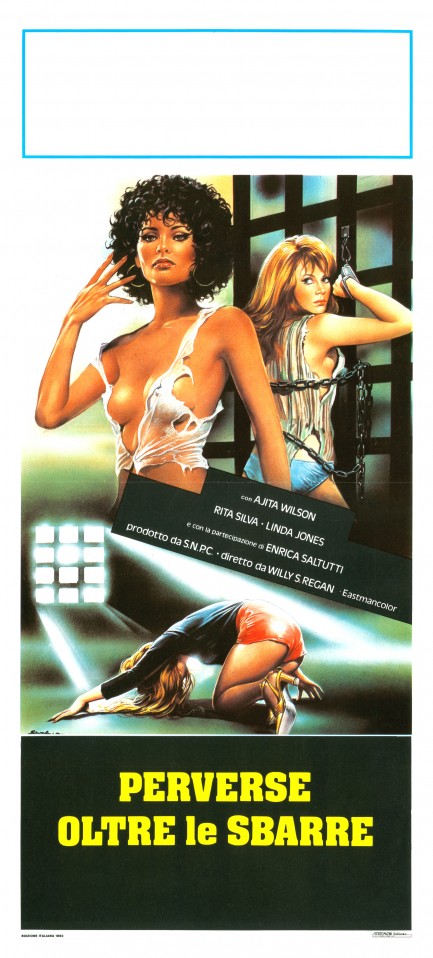
American actress Ajita Wilson, who we discussed briefly some years back, was born in Brooklyn but made a career in Italian sexploitation and porn movies. She was transsexual, having been born George Wilson, but opting for gender reassignment in the mid-1970s. She launched her career in New York City, making a name for herself in the red light district of the era, which back then was centered around Times Square—these days aka Disneyland east. Not long after establishing herself in the Big Apple she was seen by a European producer and offered a chance to work across the pond in historic Rome. She jumped at the chance.
Wilson appeared in close to fifty movies, starting with 1976's The Nude Princess. In Perverse oltre le sbarre, which is known in the U.S. as Hell Behind Bars, she plays a killer and jewel thief named Conchita who gets tossed in the prigione and has to negotiate the usual women-in-prison staples—corruption, violence, lesbianism, and a sadistic warden. Oh, and let's not forget screechy girl fights, and sexual harassment showers. Did we leave anything out? Ah, cavity searches. Can't forget those. Torture by high voltage shock. Illicit drugs. Karate chopping double-crossers. Breathy sexploitation soundtrack. Maybe that doesn't count, though, because the prisoners theoretically can't hear it.
Yes, this prison Ajita ends up in is pretty bad, but it could be worse—at least the warden lets the women wear lingerie. Rita Silva and Linda Jones co-star in what becomes a standard WIP escape drama, and of course the escape is more fraught than anyone expected. As prison sexploitation Perverse oltre le sbarre is the same as most others, with the exception that the budget is obviously lower. With nearly fifty films to her credit Wilson almost certainly made something better. We'll take a look and see if we can find which efforts those might be, and you'd be advised to do the same and skip this one. We'll see Wilson again, though. Perverse oltre le sbarre opened in Italy today in 1984.
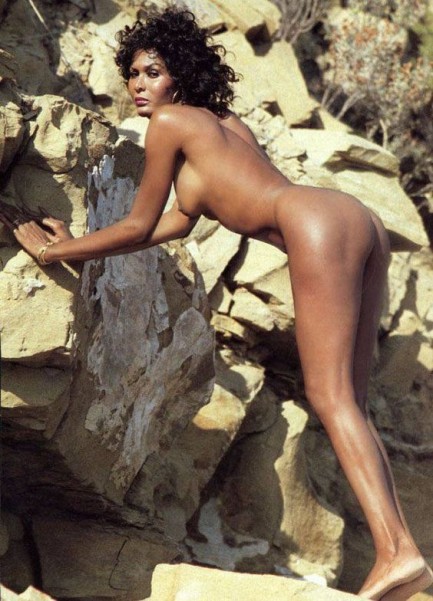
 A signing of things to come. 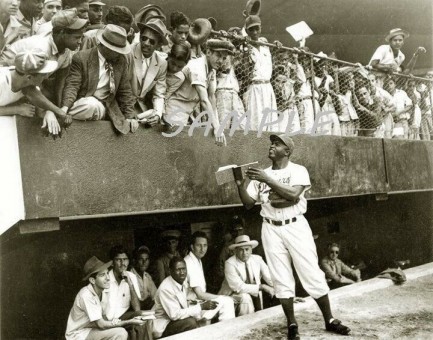
Above is a photo of Brooklyn Dodgers star Jackie Robinson signing autographs for Cuban fans in Havana during the spring of 1947. The Dodgers had used Havana’s La Tropical Stadium as their spring training base during the 1941 and ’42 seasons, and went there again in ’47 to avoid some of the publicity and hostility that would have surrounded Robinson, who was destined to be the first African American baseball player of the modern era. Even away from U.S. shores it was a trying time for Robinson. Havana was run by Americans interests, and was selectively an apartheid city. Robinson stayed at the Hotel Boston in Old Havana, rather than the grand Hotel Nacional in swanky Vedado with the white Dodgers. This annoyed Robinson, but he needed to focus on his play because, though he had been invited to spring training, he was not guaranteed a Major League roster spot. The pressure must have been intense. Even so, in this photo he takes time to sign autographs for Cuban fans, gracious as always, on the cusp of a career that would redefine what it meant to be a Major League Baseball player.
 When the clock strikes twelve Jayne's ready to party. 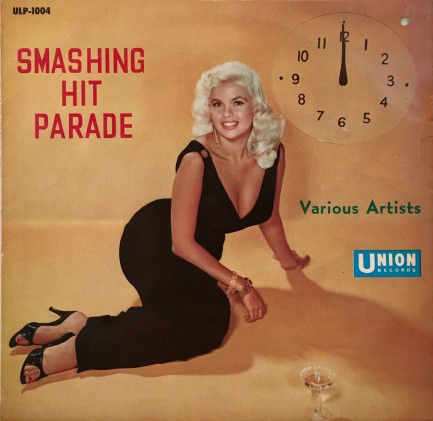 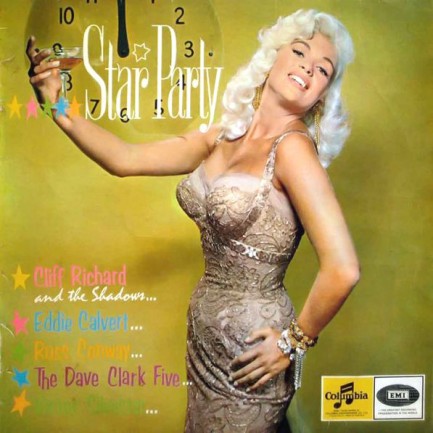 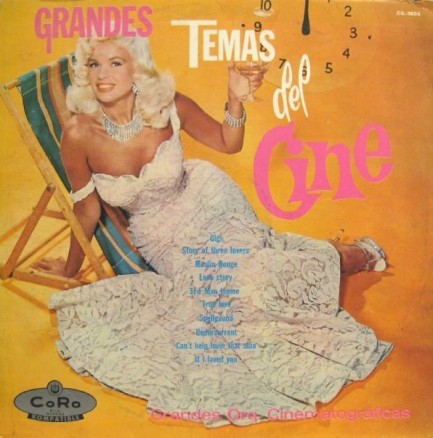
Curvy Jayne Mansfield stars on these LP covers from the 1960s that caught our eye because of the clock striking midnight on all of them. You would think these are all from the same company, but no—Smashing Hit Parade, for example, is an album that despite its English name actually came from Japan's Union Records. The platters contain songs such as “Hello Mary Lou” by the Brooklyn Bluegrass Collective, and “Tonight, My Love, Tonight” by Dany Locker. Regardless of the musical content, the real attraction here is Mansfield. We'd love to see what she looks like around 3 a.m.
 He destroyed everything in his path—including himself. 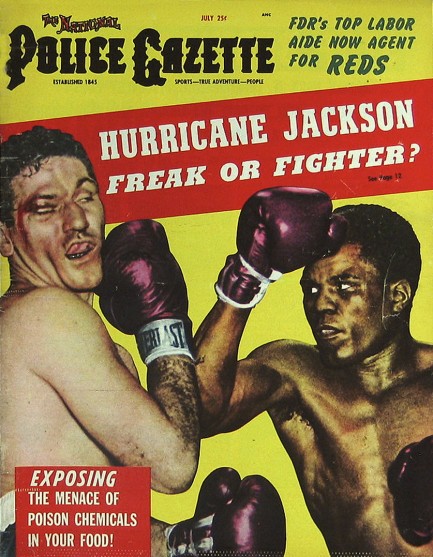
The National Police Gazette published this issue in 1954, with a cover featuring pro heavyweight boxers Tommy Hurricane Jackson and Dan Bucceroni battling at Eastern Parkway Arena in Brooklyn, New York. The fight took place on March 29, and Jackson won with a TKO in the 6th. He never won a heavyweight title, but was well regarded in fight circles for being fearless, if not self-destructive. In fact, he once fought Floyd Patterson and was knocked down nine times. Each time he rose to absorb more punishment, before losing by TKO in the tenth round. It was apparently one of the worst ring beatings ever, made worse by Jackson's sheer will. Afterward, boxing authorities suspended his license for his own protection. It was a temporary ban designed to force him to recover fully before fighting again, but we've never heard such a drastic step. It's indicative of Jackson's reputation. Was he fearless, crazy, or both? Opinions vary, but we love this Gazette cover. The magazine specialized in boxing photo-illustrations, which we've documented here, here, here, and other places if you're inclined to dig around the site. 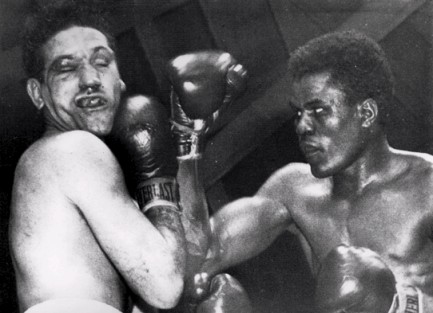
 Tonight they're gonna party like it's 1955. 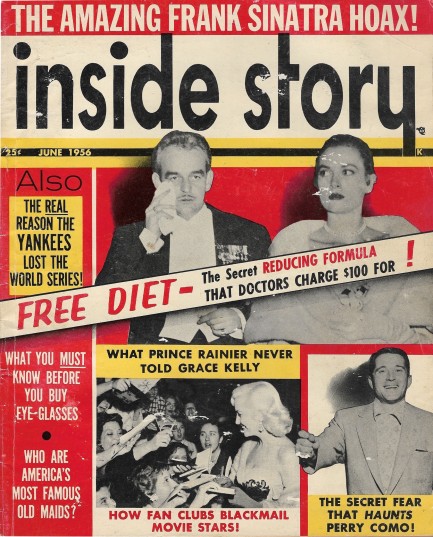
Questions abound on this cover of Inside Story, but for each one there's an answer. What did Prince Rainier not tell Grace Kelly? That the palace in Monaco was cold and drafty, and she couldn't sleep in the nude anymore because the premises were open to the public from 9 to 5. What was the amazing Frank Sinatra hoax? His studio Carlyle Productions started a whisper campaign that he was such a dedicated actor that he actually used heroin while filming the heroin drama The Man with the Golden Arm. What is the secret fear that haunts Perry Como? That his family might be kidnapped.
All of these pieces are fascinating, but since it's baseball season and people are high on the front-running New York Yankees right now, we'll point to the story, “The Real Reason the Yankees Lost!” What they lost was the 1955 World Series, and it happened—according to Inside Story—because they were partying too hard. They were ensconced at the Concourse Hotel for the Series, a hole-up made possible by the fact that their opponents were the Brooklyn Dodgers. So with both the home and away games taking place in New York City, and the players barred from sleeping in their own houses to avoid family distractions, the superstar Yanks did some major league carousing.
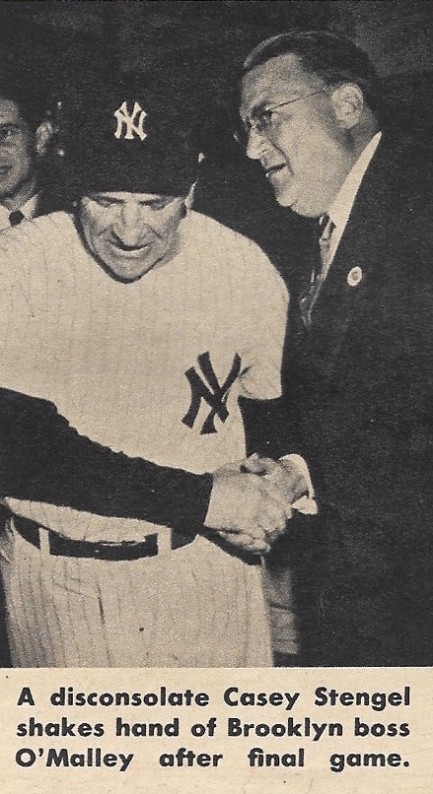 Inside Story scribe Manuel Shaw describes an allegedly typical scene: “Mickey Mantle, Phil Rizzuto, and several other Yankees were sitting around the lobby of the hotel when three lovelies from a nearby night spot showed up. Since the cuties were entertainers familiar to one or two of the players, and were rabid Yankees boosters, it was not remarkable that they were soon in animated conversation with the group, which shortly adjourned from the lobby to an upstairs suite.” Inside Story scribe Manuel Shaw describes an allegedly typical scene: “Mickey Mantle, Phil Rizzuto, and several other Yankees were sitting around the lobby of the hotel when three lovelies from a nearby night spot showed up. Since the cuties were entertainers familiar to one or two of the players, and were rabid Yankees boosters, it was not remarkable that they were soon in animated conversation with the group, which shortly adjourned from the lobby to an upstairs suite.”
Then he moves into this bit: “A beauteous brunette [was in the hall] clad only in a negligee. The two players wanted to spend some time with her, and they agreed that they would rather do it separately, but she insisted it would be more fun if they both stayed, and after a while she persuaded both of them to come back with her to her room. Soon a real party was underway, joined by many other Yankees, and several doting females who lived at the hotel.”
Well, what good is being a member of the famed Yankees if you can't do some Yankee doodle diddling? Most guys we know can't resist a free beer, let alone a woman in lingerie. A little later in the story, after the question of whether professional gamblers employed the party girls to distract the Yanks, we get this: “If true, this parallels the persistent story in gambling and diamond circles that the voluptuous Marilyn Monroe was introduced to Yankee star Joe DiMaggio just in order to take his attention off the Yankee pennant drive of a few years back.”
Did Inside Story really just say Marilyn Monroe was a mafia Trojan horse? Yup. They did. No ambiguity there. The magazine does not go so far as to say Monroe was aware of the set-up, so perhaps it was a matter of maneuvering her into the same space as DiMaggio at the same time and letting nature take its course. There are worse ways for a man to fall from the sporting mountaintop. And talk about a soft landing. We doubt the story, but you never know. There are far crazier tales starring Monroe. We have about thirty-five scans below, and more tabloids coming soon. 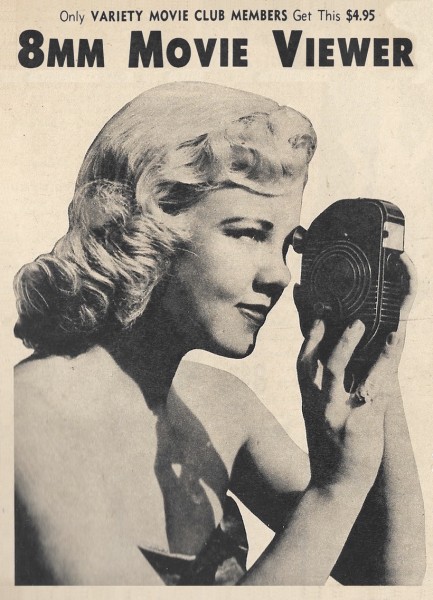 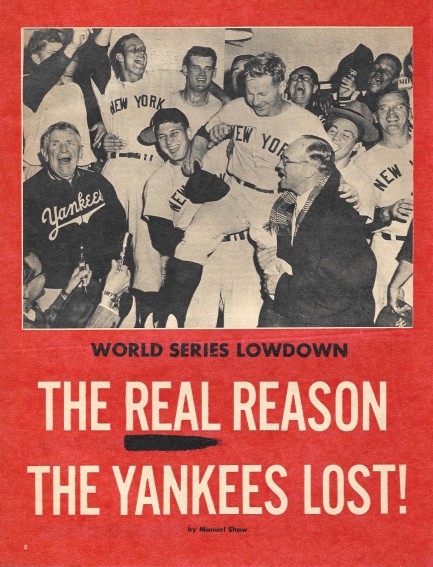 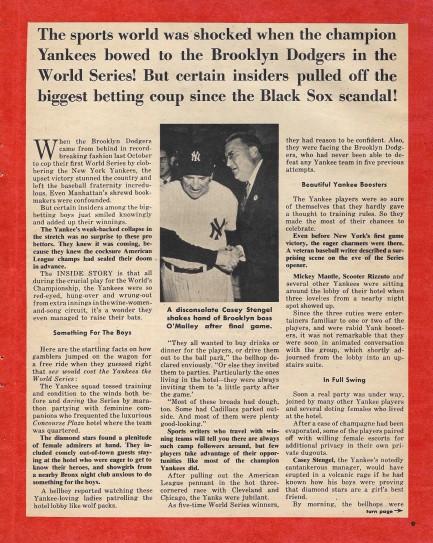 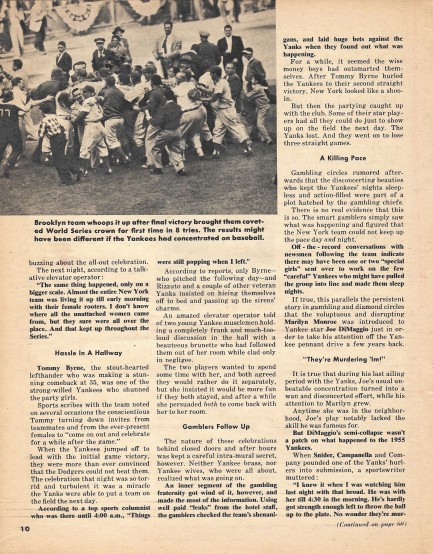 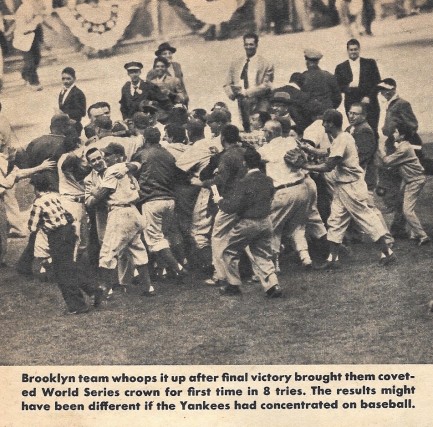 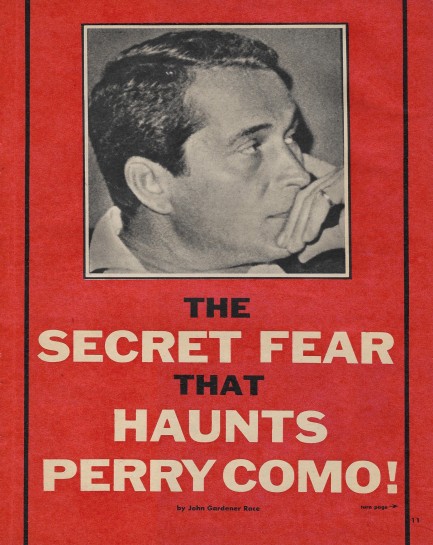 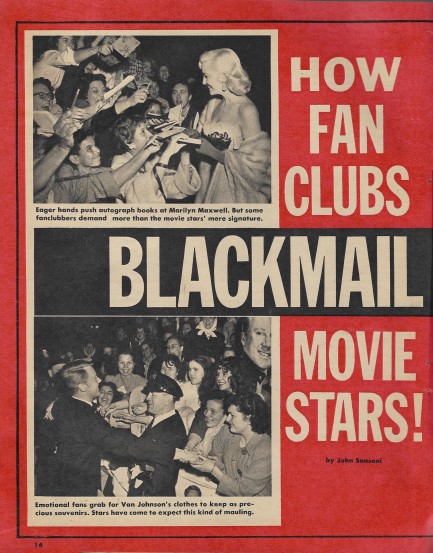 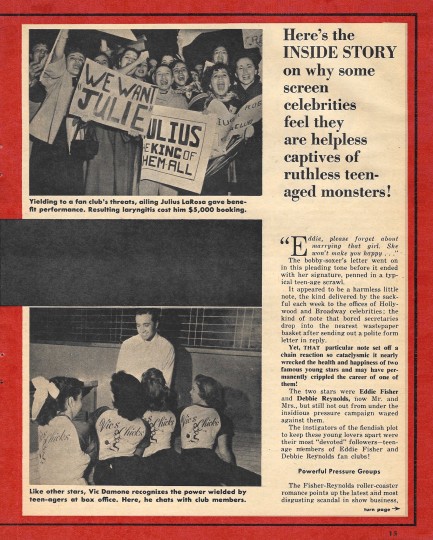 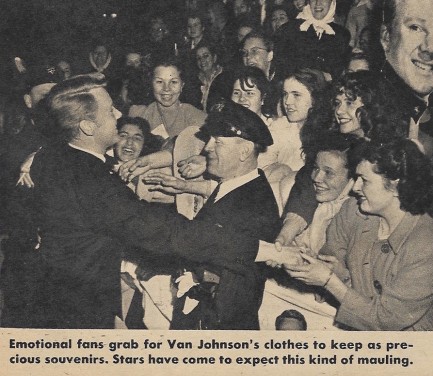 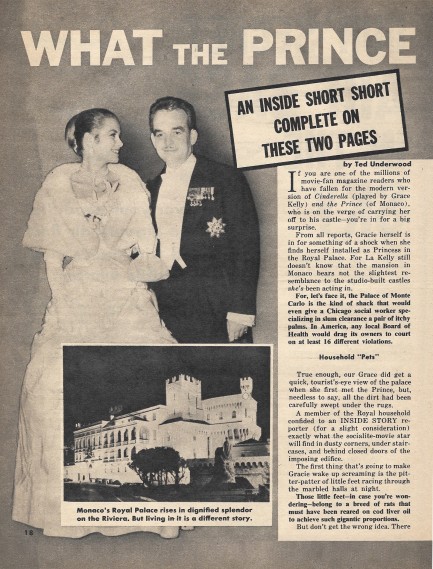 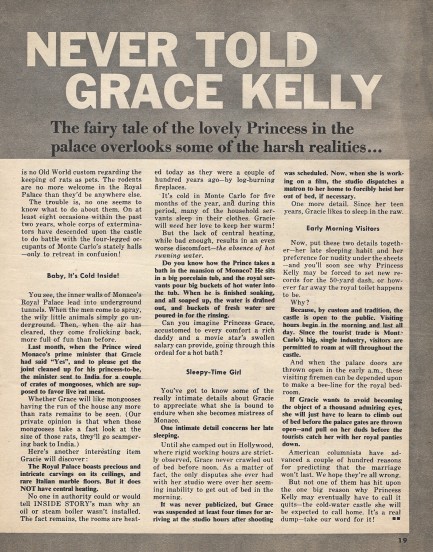 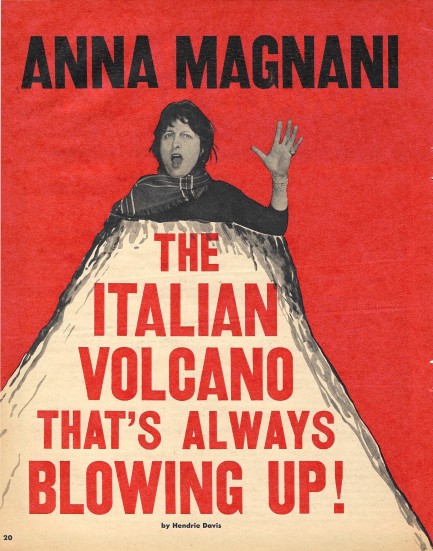 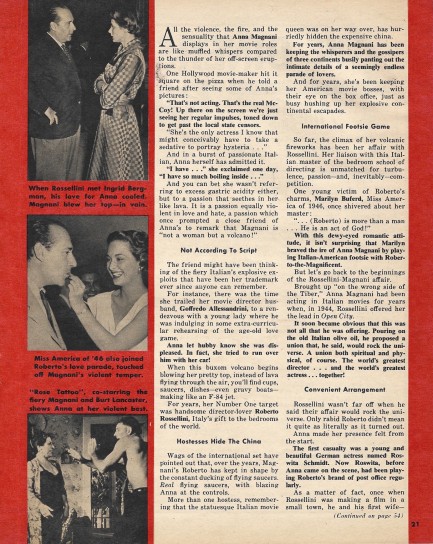  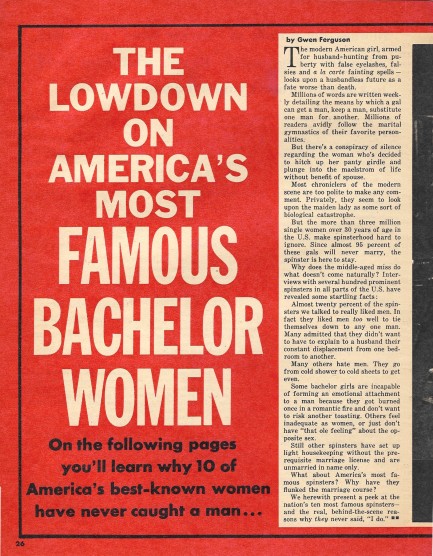 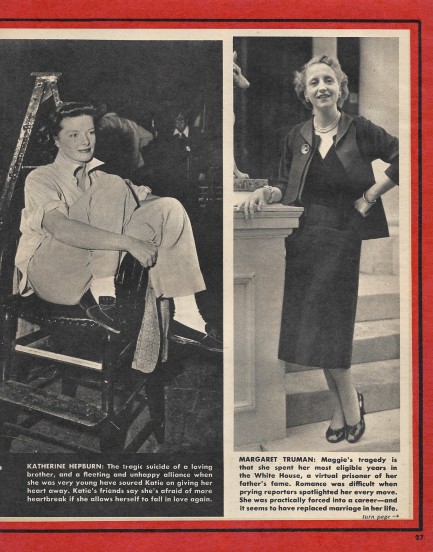 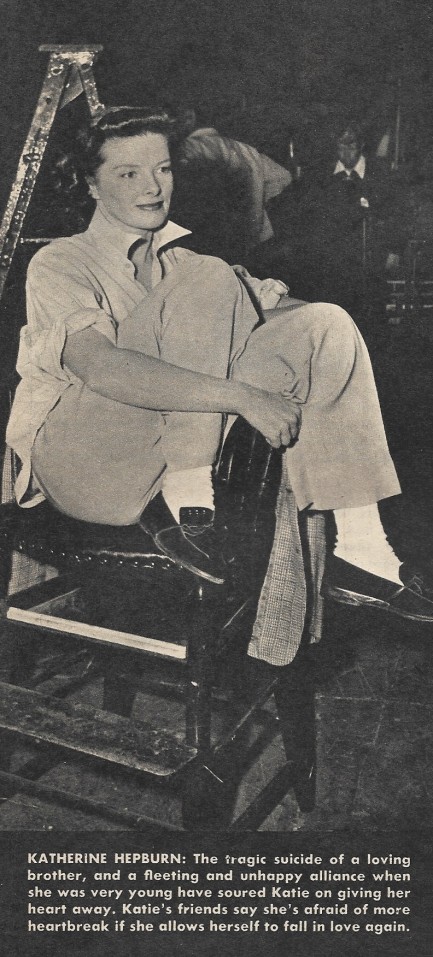 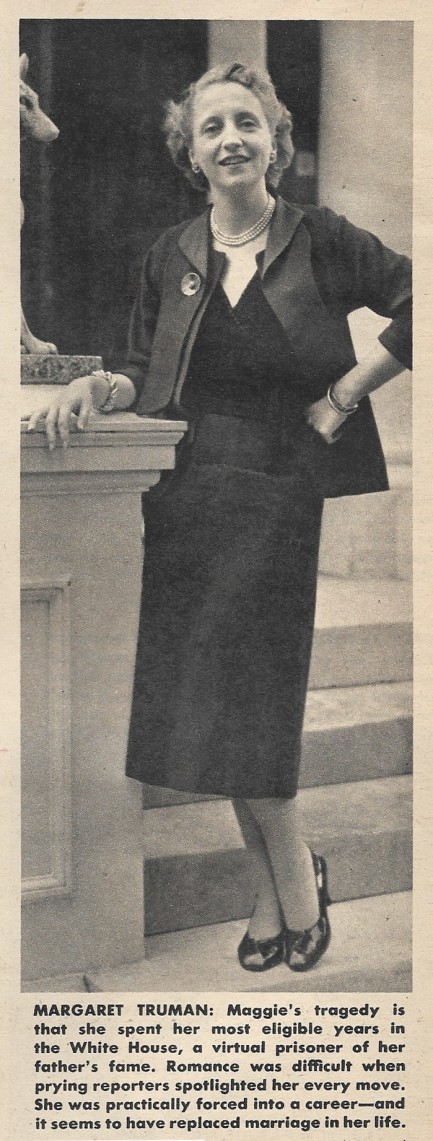 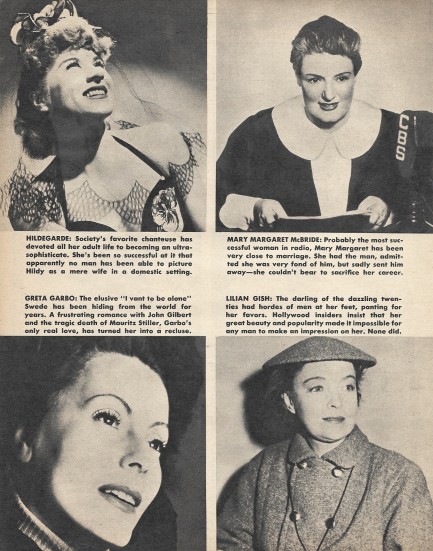 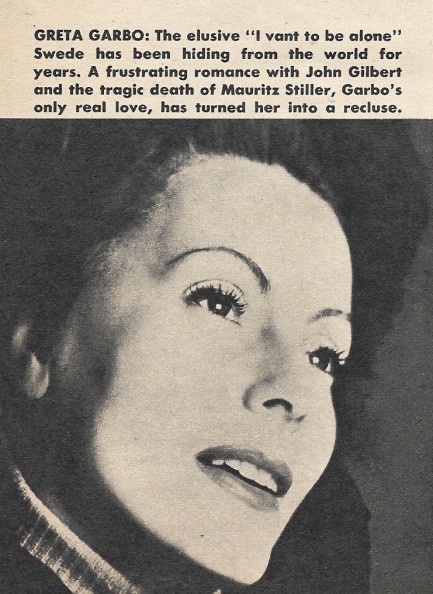 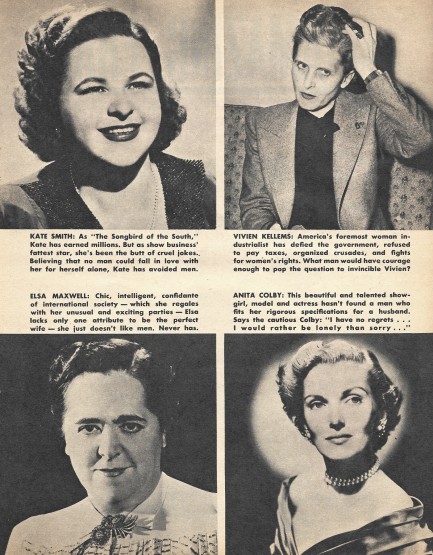 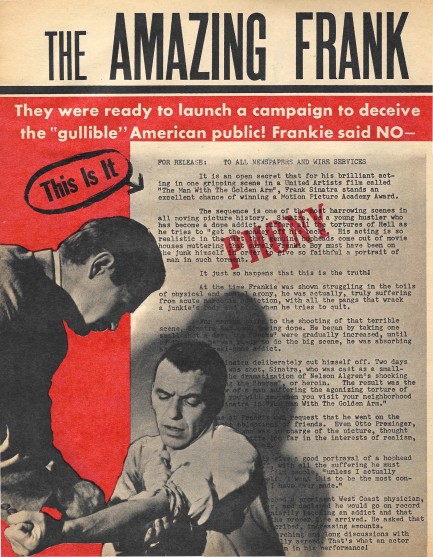 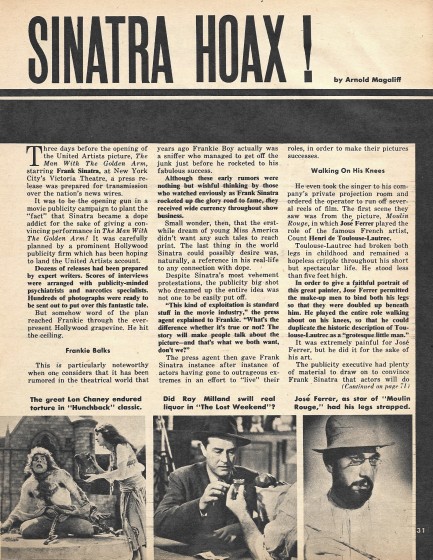 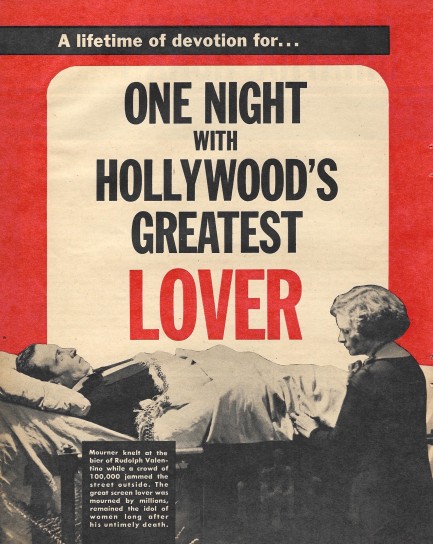 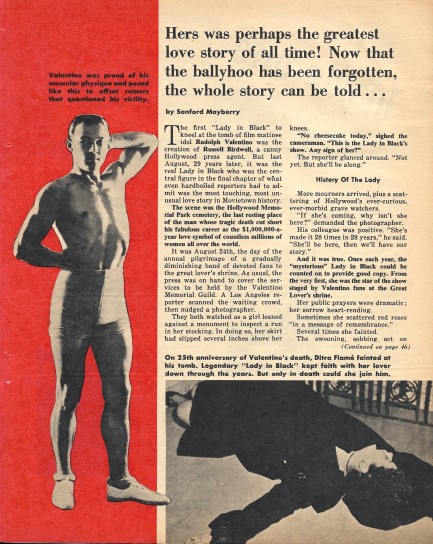  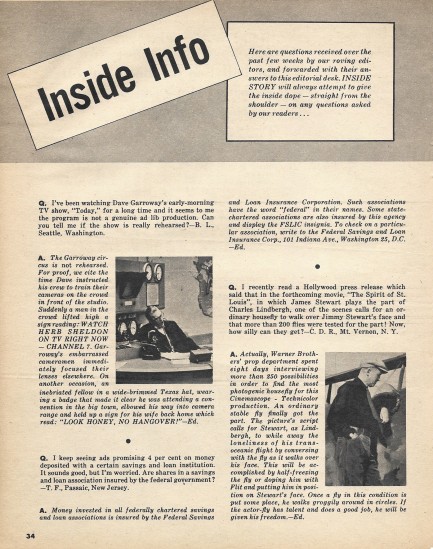 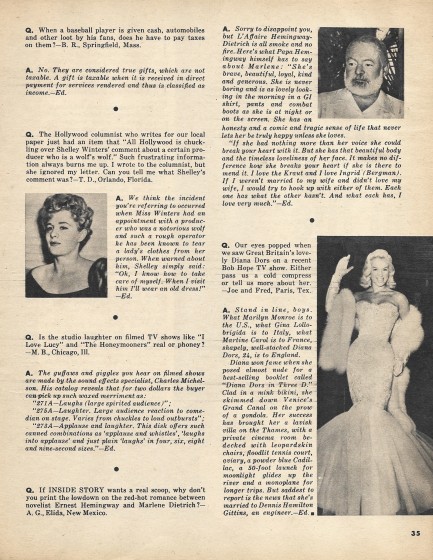 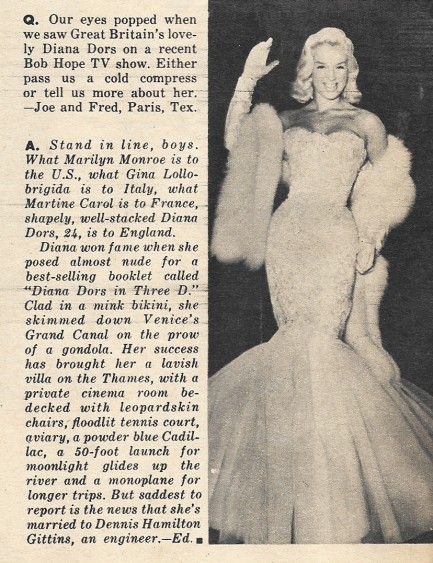 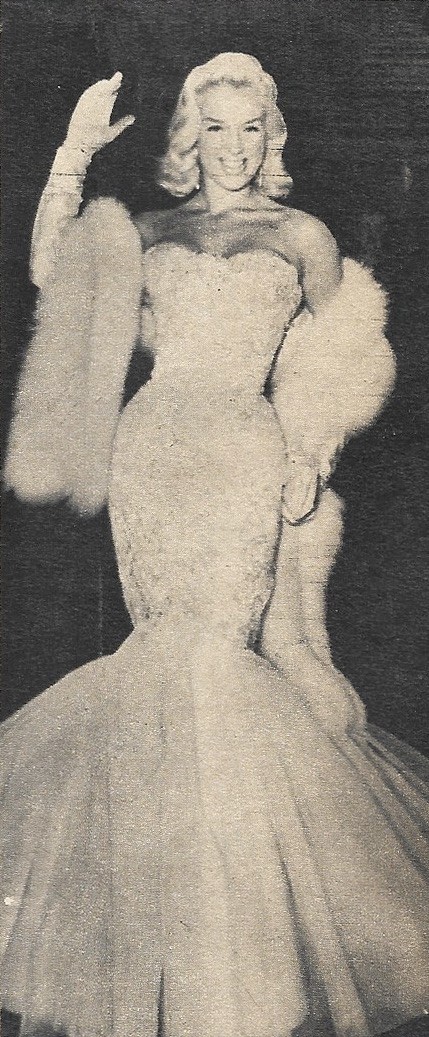 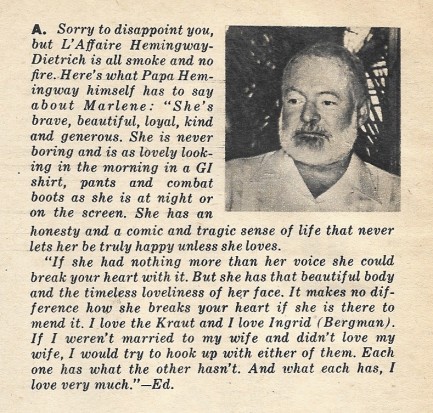 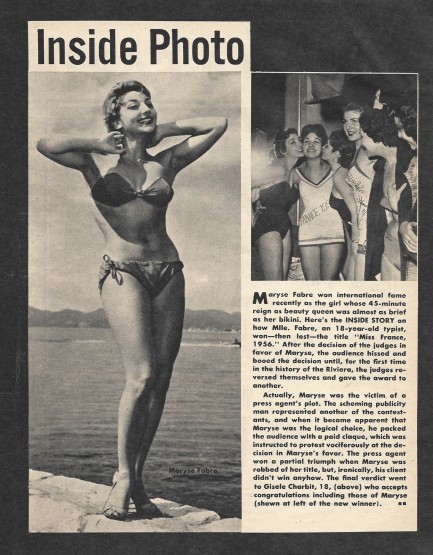 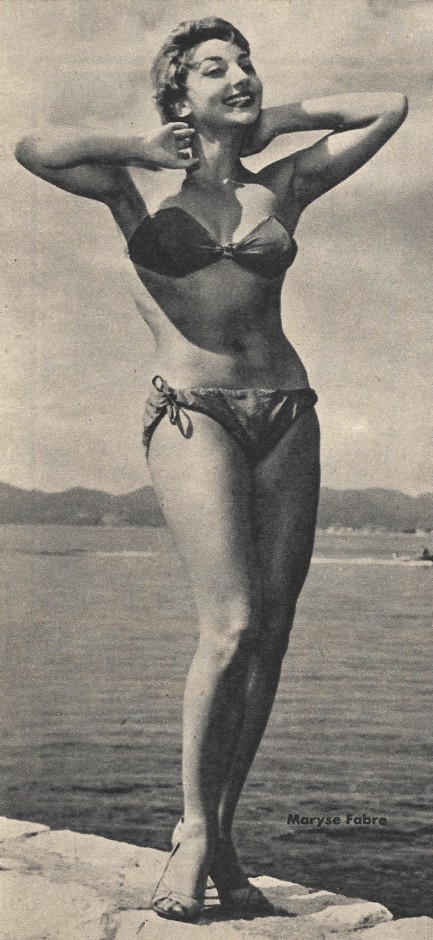 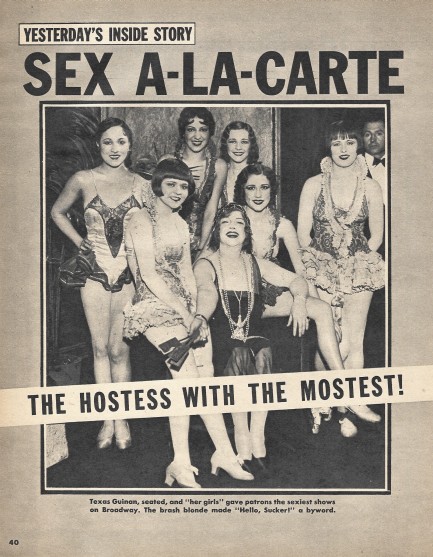 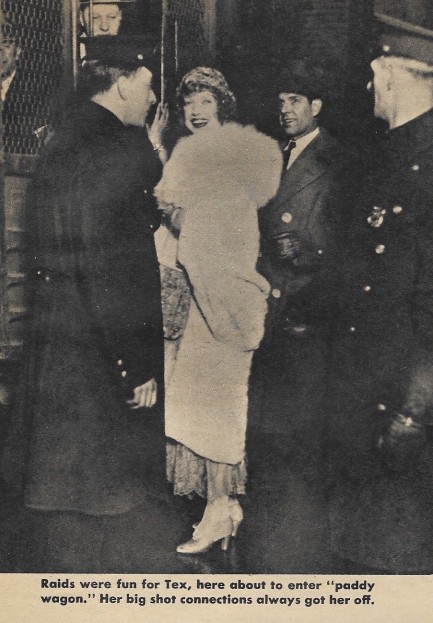 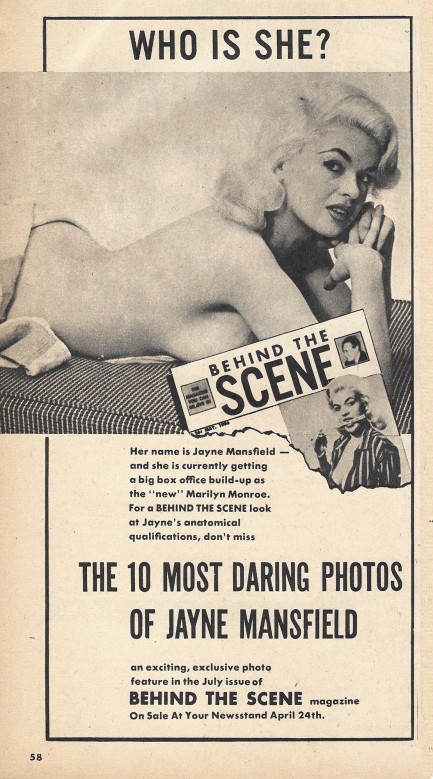
 Well, what are you waiting for? I haven't got all day—impress me. 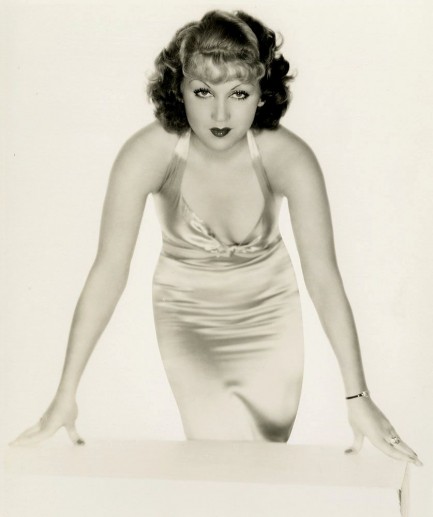
Brooklyn born actress Grace Bradley gives the camera a provocative look in this beautiful Paramount promo shot from 1934. She had a very successful run in cinema that began in 1932, but after appearing in more than thirty productions gave up show business in order to support the career of her husband, cowboy star William Boyd, the man behind the legendary character Hopalong Cassidy. Bradley hopped along herself until age ninety-seven, finally dying in California in 2010. We should all do so well.
 Trevor makes the most of her smoke break by posing for a master. 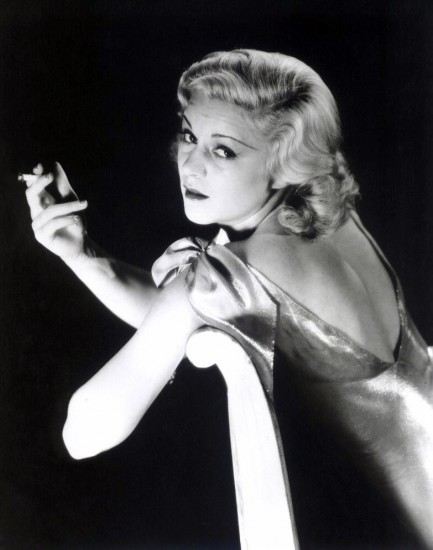
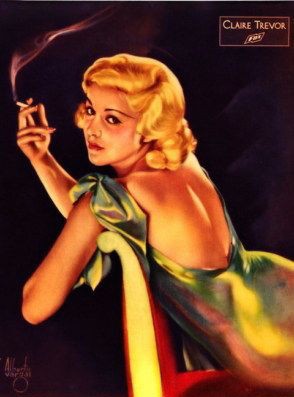 Brooklyn born actress Claire Trevor made more than sixty movies over seven decades, including the important film noir entries Raw Deal, Born To Kill, Johnny Angel, Murder My Sweet, and Key Largo, the latter of which snared her an Academy Award for Best Supporting Actress. Brooklyn born actress Claire Trevor made more than sixty movies over seven decades, including the important film noir entries Raw Deal, Born To Kill, Johnny Angel, Murder My Sweet, and Key Largo, the latter of which snared her an Academy Award for Best Supporting Actress.
She's good in general, but if you haven't seen her in Key Largo you really should. She's absolutely brilliant in it. She was one of film noir's defining artists, an indispensable participant in it. We're also fond of her in lighter fare such as 1965's How To Murder Your Wife, with Jack Lemmon. The noirish shot above was used as a reference photo by the legendary Peruvian artist Alberto Vargas. He painted a portrait of Trevor which you see inset just above, and you also see her posing with the piece below. The portrait was commissioned by her employers Fox Film Corporation as a promo image, a type of work Vargas did often, and the studio used prints of portrait as lobby cards. All of these images came about in 1934.
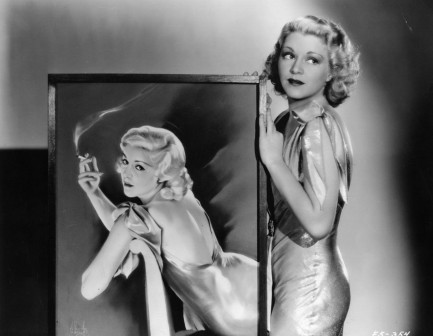

|
 |

The headlines that mattered yesteryear.
2003—Hope Dies
Film legend Bob Hope dies of pneumonia two months after celebrating his 100th birthday. 1945—Churchill Given the Sack
In spite of admiring Winston Churchill as a great wartime leader, Britons elect
Clement Attlee the nation's new prime minister in a sweeping victory for the Labour Party over the Conservatives. 1952—Evita Peron Dies
Eva Duarte de Peron, aka Evita, wife of the president of the Argentine Republic, dies from cancer at age 33. Evita had brought the working classes into a position of political power never witnessed before, but was hated by the nation's powerful military class. She is lain to rest in Milan, Italy in a secret grave under a nun's name, but is eventually returned to Argentina for reburial beside her husband in 1974. 1943—Mussolini Calls It Quits
Italian dictator Benito Mussolini steps down as head of the armed forces and the government. It soon becomes clear that Il Duce did not relinquish power voluntarily, but was forced to resign after former Fascist colleagues turned against him. He is later installed by Germany as leader of the Italian Social Republic in the north of the country, but is killed by partisans in 1945.
|

|
|

It's easy. We have an uploader that makes it a snap. Use it to submit your art, text, header, and subhead. Your post can be funny, serious, or anything in between, as long as it's vintage pulp. You'll get a byline and experience the fleeting pride of free authorship. We'll edit your post for typos, but the rest is up to you. Click here to give us your best shot.

|
|











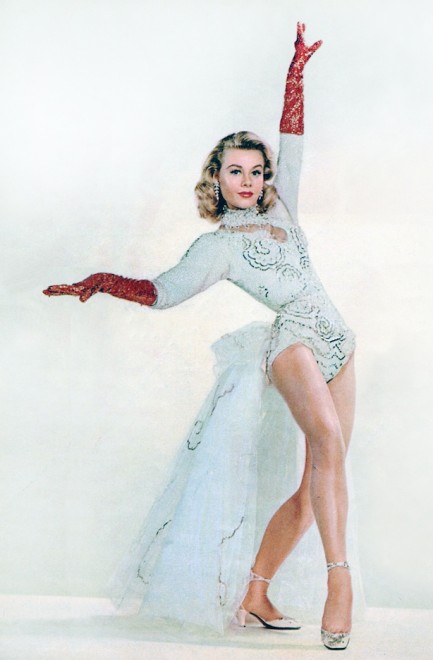
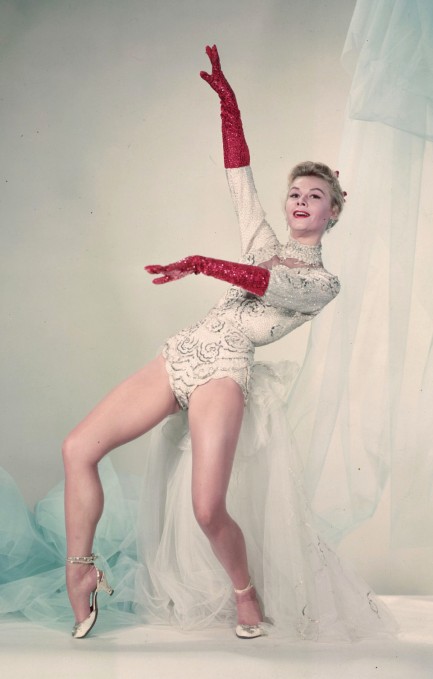
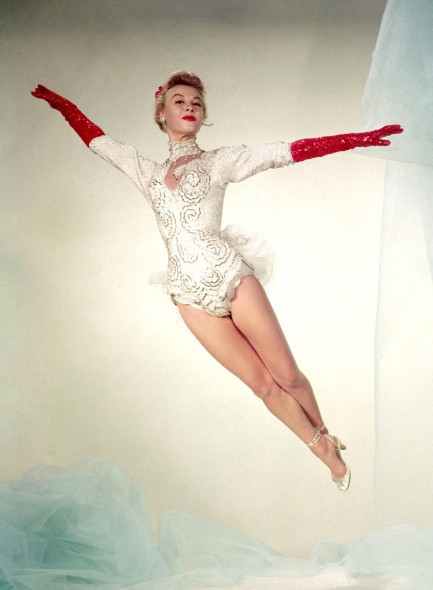
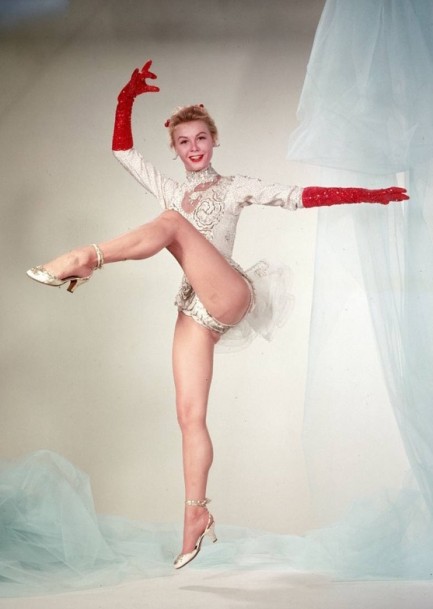









 Inside Story scribe Manuel Shaw describes an allegedly typical scene: “Mickey Mantle, Phil Rizzuto, and several other Yankees were sitting around the lobby of the hotel when three lovelies from a nearby night spot showed up. Since the cuties were entertainers familiar to one or two of the players, and were rabid Yankees boosters, it was not remarkable that they were soon in animated conversation with the group, which shortly adjourned from the lobby to an upstairs suite.”
Inside Story scribe Manuel Shaw describes an allegedly typical scene: “Mickey Mantle, Phil Rizzuto, and several other Yankees were sitting around the lobby of the hotel when three lovelies from a nearby night spot showed up. Since the cuties were entertainers familiar to one or two of the players, and were rabid Yankees boosters, it was not remarkable that they were soon in animated conversation with the group, which shortly adjourned from the lobby to an upstairs suite.”







































 Brooklyn born actress Claire Trevor made more than sixty movies over seven decades, including the important film noir entries Raw Deal, Born To Kill, Johnny Angel, Murder My Sweet, and Key Largo, the latter of which snared her an Academy Award for Best Supporting Actress.
Brooklyn born actress Claire Trevor made more than sixty movies over seven decades, including the important film noir entries Raw Deal, Born To Kill, Johnny Angel, Murder My Sweet, and Key Largo, the latter of which snared her an Academy Award for Best Supporting Actress.





































































